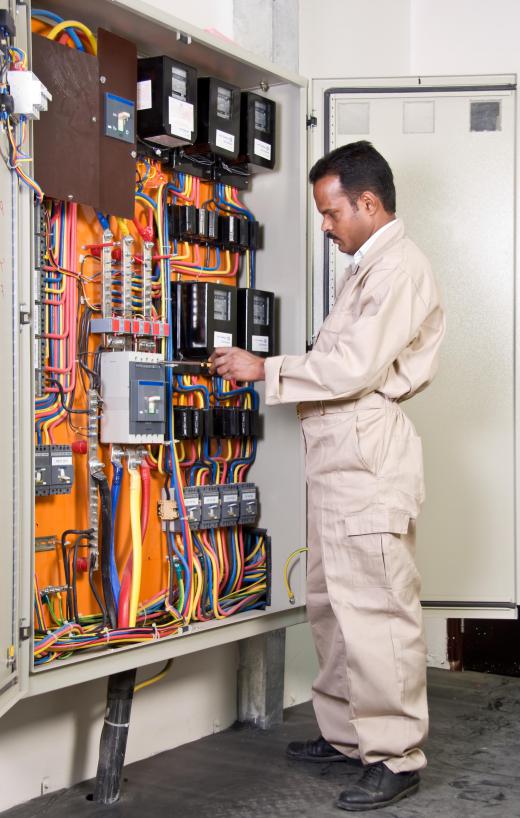A voltage detector is a device that tells the user whether an object has an electrical charge. It can be a simple, pen-shaped piece of testing hardware that indicates the presence of electricity, or it can be an advanced tool used to detect precise voltage levels in electrical systems. Voltage detectors use either visual or audio cues to tell the user whether voltage is present. Some are equipped with lights and numbers that indicate the level of voltage, while a less advanced voltage detector might simply make a beep to indicate that a level of detectable voltage is present.
Voltage detectors are used by electrical workers of many kinds, from indoor electricians to the workers outside on the power poles. They use voltage detectors to tell them whether a part of a power system is live with electrical power. This type of hardware device comes in different shapes and sizes depending on its testing purpose.

High up on a power pole, an electrical worker uses the voltage detector to determine which power lines are live, which keep him safe, and which help him do his job accurately and efficiently. An electrician operating a voltage detector inside a home will often stick a device that looks much like a highlighter into the electrical outlets in a building to determine whether the outlets are receiving electricity. This can be a troubleshooting tool used to determine power problems in a building, or it can be used to verify electrical installation or repairs to an electrical system.

In areas where wet weather is a problem for electrical workers, voltage detectors can be specially designed to provide for safer operation in wet conditions. Voltage detectors are tested and rated to use within certain ranges of voltage. Using a voltage detector on higher voltage than that for which it is recommended will be inaccurate and may be dangerous. High voltage detection should be done with hardware rated for the levels of voltage thought to be present in the tested electrical line, even if the electrical feed may not be there.
Even though voltage may not be present, electrical workers dealing with high voltage must still wear protective gear that is insulated against high voltage electrical charge. This equipment includes insulated hand gear and dielectric footwear. Made of special rubber, dielectric footwear protects a high-voltage worker by breaking her conductive connection with the ground near the electrical line. This type of footwear is especially important with high voltage equipment because higher voltages can cause electricity to arc, or jump, through the air onto a nearby conductive object like a person.
